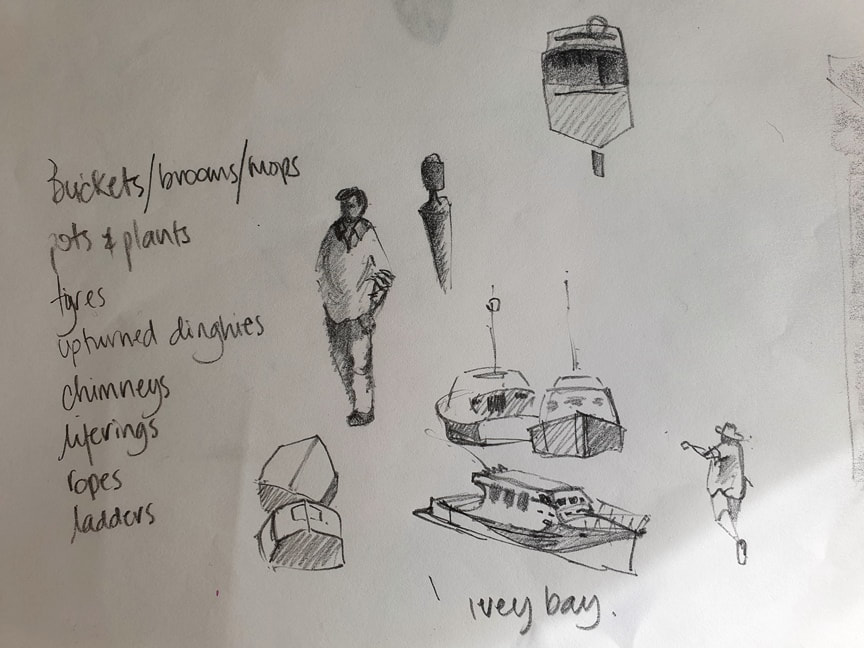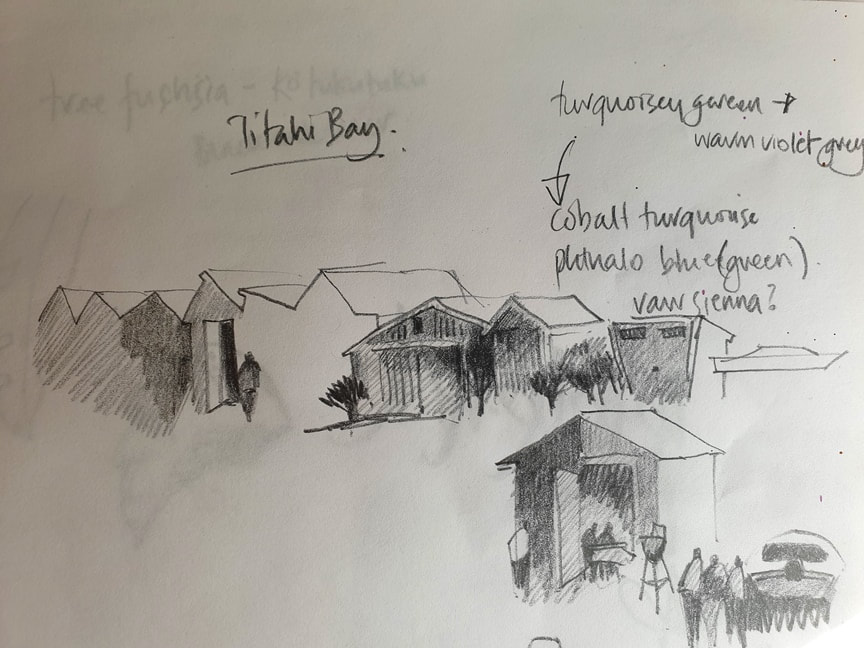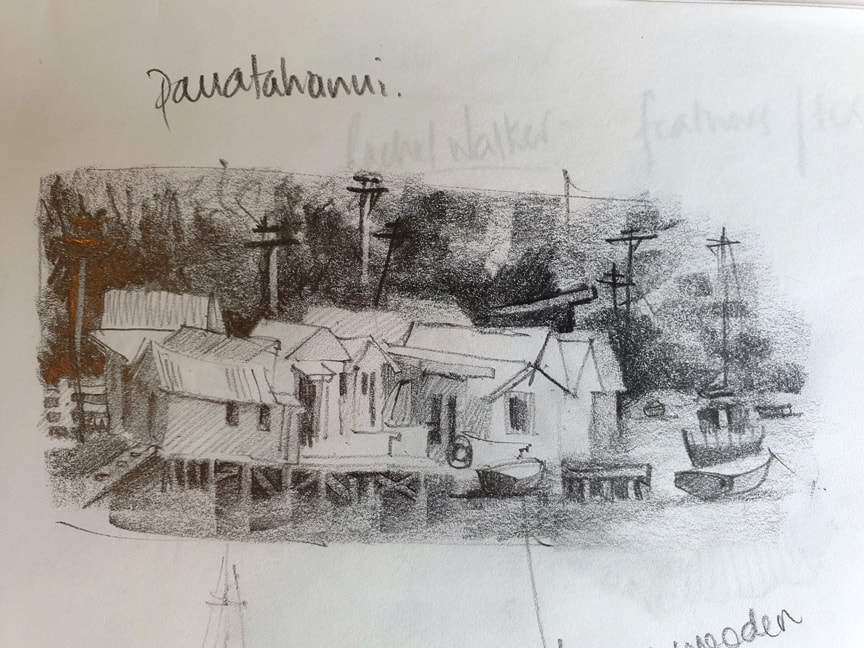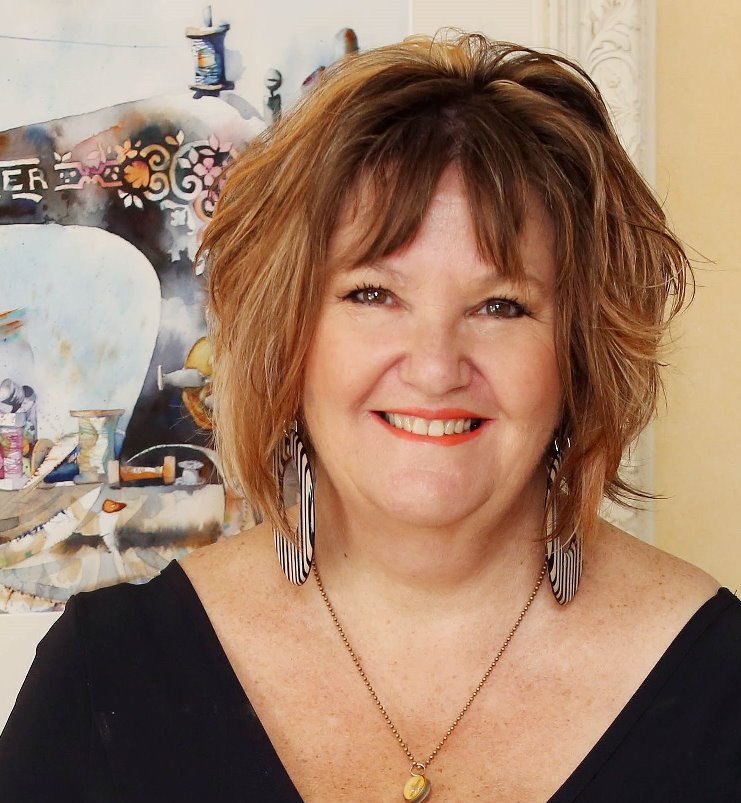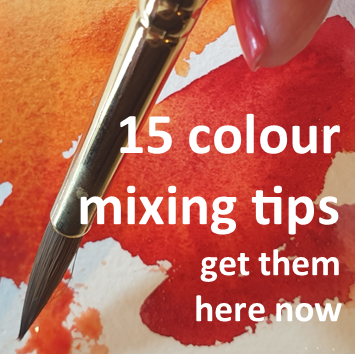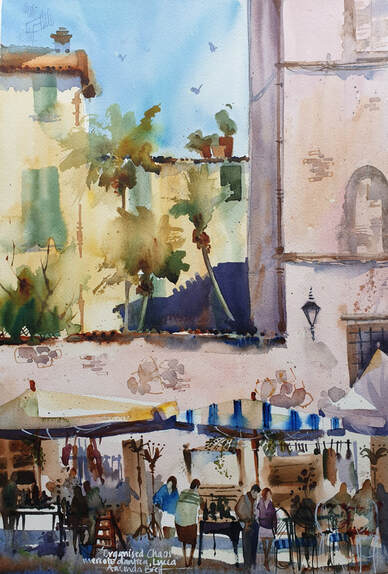 Organised Chaos, en plein air Lucca 2019 NFS Organised Chaos, en plein air Lucca 2019 NFS
FROM ORIGINAL POST 4/9/2017
The cool thing about Watercolour is that it is mostly not too difficult to fix. I know, I know, everyone says how it is the most difficult medium but truthfully, everything new is difficult and the myth sayers I've met are the ones who can't paint (watercolour) and have given up. The main issue most beginners in watercolour painting have is determining what the problem actually is!! Sometimes there actually isn't a problem but we've got to that dreadful middle stage and don't know what to do next. If you definitely have an issue to solve, read on McDuff!! If you decide the composition or design is a problem, redraw a value study of the corrected composition on spare paper and re-work the improved version into the painting. Yes - that's right paint over it, you might need more paint! Could you draw/paint it better? Practice drawing the shape you require on spare paper, then practice painting the shape/colours etc on some spare watercolour paper. Wet the offending area, sponge out problem shape/area carefully and re-draw and paint. A shape is not quite right - I've solved this problem in my paintings in 6 or 7 different ways. Here's a couple you can try (1) wedge a dark tone next to the problem area correcting the shape, (2) stencil lift to correct the shape or (3) soften an offending edge with a damp sponge. What watercolour problems cannot be fixed? The most difficult actual watercolour problem I have found is too much opaque pigment mixed too much on the palette and then stirred up too much on the paper - too dead! Sometimes a stencil-lifted highlight will work or you could try adding more detail to another part of the painting to draw attention away from the offending area or carefully glaze a transparent complementary colour over the problem area to knock it back. Always try to push yourself to finish every painting whether you've decided it will be a 'good' painting or not. The truth is, you might not be able to fix a work you've deemed irretrievable but the effort of trying will teach you more about watercolour/painting/process than starting yet another painting that you'll struggle to complete. Further, if you've already deemed the painting a failure, you really can't make it any worse - keep at it!! check out my Paintbox Tips for more watercolour help!! happy painting!! Amanda See upcoming classes HERE Student Feedback Gallery
0 Comments
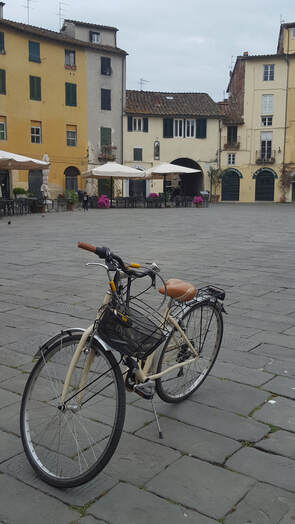
Edited from original post April 2018 in Lucca Italy
Ciao a tutti!! I'm back in Lucca, my home away from home, preparing for my watercolour painting holiday workshops. This morning I set out to surprise my dear Lucchese friends and while we chat over coffee I became overwhelmed with a huge wave of "I must paint right now!". Not quite organised for plein air painting, a quick value sketch on site will help me understand and remember shapes and values, what I see and prepare me to paint in my studio. My non-so-secret strategy works for any subject, any style and is relevant to design principles from any school of thought. I've mapped out some processes to help you get started on your own plein air sketches. Once I select my subject, I use a soft pencil with a seriously sharp point (I sharpen my pencil several times during my sketching process), I sketch a light "frame" - the size of a credit card - remember this is a value sketch to understand the darks, lights and shapes, you can create a masterpiece sketch later, this small study is purely for the purpose of getting to paint quickly - my key thoughts are:
Sketching AND painting!! Next I lightly mark in a grid of thirds vertically and horizontally, each intersection is an optimal focal area. I'm thinking 5 big shapes with values assigned - no detail at this point - so, for my subject today, my 5 big shapes are:
I used my pencil to measure angles - always have a new pencil on hand, it's hard to measure angles with a stubby!! Now that we have 5 (6) big shapes, first rule of thumb is to forgive yourself for blunders you are about to make, say it out loud "this is the way I want it!!" :) tomorrow you'll do another version and it will be different again because you'll be a different person tomorrow with a different view and a greater skill-set. 2nd rule is to think BIG, Medium, small - in other words VARIETY is the spice of life! 3rd rule is to make INTERESTING shapes - no squares nor circles, odd shapes are best and no shape the same size next to each other, this is more interesting for you as an artist and also for your viewers and collectors - always something new to look at and wonder "why did she do that?" There's a lot to think about and we've barely got started!! mamma mia!! While we're here lets block in a light value tone around white areas just to get our heads in the game. Build up your sketch by giving each shape a darker tone from the shape next to it, it's a good idea to have shapes overlapping so use your eraser to steal back lights/shapes where you need to. Consider leaving "WRONG" marks, don't erase them, they add character - PLUS, I don't know about you, if I erase a wrong mark I can almost guarantee I will make the same wrong mark again!! I think that's why I got to the point of not erasing and I have come to enjoy the marks that make a sketch full of character and life. While I'm sketching I'm positioning darks against lights and lights against darks, especially in the focal area, then I can think about possible detail shapes ... 5 for a small sketch, 7 is stretching it for this size - thinking silhouette shapes only!! To satisfy my itchy fingers I often make a list of goodies to add to my painting later. In this case its pot plants, tables and chairs and people, copper downpipes, chimneys, electrical wiring, pigeons, bicycles, signage etc, etc. I hope you enjoy sketching value studies, with practice you will get better and quicker. I'd love to hear how you get on!! cari amici!! xx
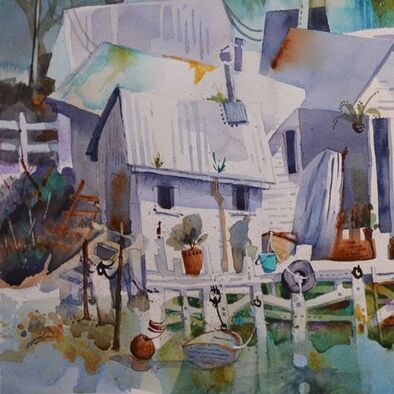
"I keep wanting to get photos of those sheds, but always seems to be wrong time of day, wrong tide or wrong weather for stopping. Or... we use the road on the other side of the estuary!"
This is what happens if you paint photo realism or you are too dependent on photos - you're probably sunk because you are waiting for ideas to happen. Ideas don't just happen - artists, scientists, engineers, poets, musicians MAKE IDEAS HAPPEN. We don't have time to wait. The ugly truth? No matter how long you wait, you will never get your perceived "perfect photo" the weather will be crap, the light will be wrong - whatever! This is really just another form of procrastination. There's 2 solutions:
when you get your horrible photos home, pick out the ones with the stuff you need and start doodling and sketching on a big sheet of paper. make lists. Sketching is an idea generator. ciao cari pittori xx
I discovered this scene on a road-trip to Wellington. For a few minutes it had great light, then it was gone. but not only that I couldn't zoom my camera in enough, I'd been driving all day and hadn't found my accommodation yet. no where to sit and soak up the ambiance so a little walk around the bay and a few quick snaps. Photos were terrible but quite a bit of information once I zoomed in.
I've seen many paintings of this scene and thought - wow, how boring - everything straight and lined up - how dull. What can i do to make this more exciting and engaging? I spent quite a lot of time doodling and playing and getting my head in the game! |
AuthorPaintBox Tips, secrets, random thoughts, Poetry in watercolour is made in the freedom of the here and now. Amanda Brett Inspiration exists, but it has to find you working - Pablo Picasso There are no mistakes in watercolour, just some extra surprises!! Categories
All
What my readers and viewers have to say
Your emails are so informative! I must confess I've watched a couple of your demos from beginning to end, and it makes me want to watercolor!!! I've only ever painted with oil or acrylics and haven't know how to begin with WC. Your content is excellent!
Susan VN Hi Amanda
Thank you for your tips. They inspired me to practise and I realised I haven’t been loading the brush properly. I learnt about adding more paint, and not water, to washes. In today’s tips I like the idea of painting with purpose. Your tips are very helpful. I very much appreciate receiving them. Elizabeth Hi Amanda I enjoyed your post and generous tips. Looked up Dan Burt I begin to see that you can colour any subject to give it pizazz so long as the tone and form is correct Certainly adding value now to my attempts Thanks heaps Annie
Yes very wise words. Agree with not fussing and agree with comments about good quality paint. Well written and inspirational as always. Cheers Janet xxxx Archives
July 2023
Copyright © 2022 All images and text on Amanda's blog and website are the the legal property of Amanda Brett and may not be reproduced without express permission from Amanda Brett or her authorised agent. Thank you for respecting her art and the livelihood of all artists.
|

